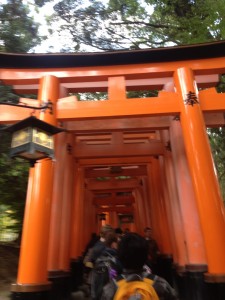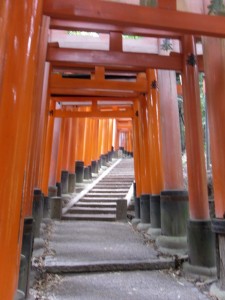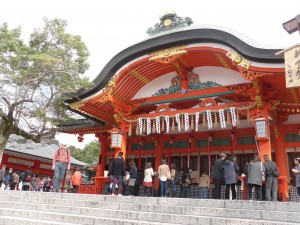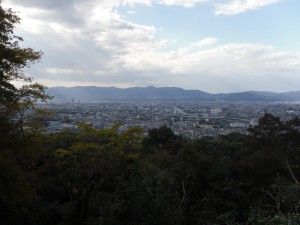On Saturday some friends and I went to Fushimi Inari Shrine in Kyoto. It’s one of the most famous in the area, well-known for its abundance of torii. The larger torii are typically bought by companies, as they typically cost many thousand dollars. They are then erected across the mountain paths, often so close together that the paths become more like hallways. It makes for an incredible walk.
However, families and individuals can buy smaller torii, also in varying sizes, that they place on the many smaller altars on the mountain.
Inari is the kami of rice, agriculture, and prosperity among other things. Statues of Inari’s messenger, the fox, are all over the mountain.
It was a long hike to the top of the mountain. From the time we exited the nearest train station to the time we left the shrine, it probably took us over two hours, and we didn’t explore every path. The paths aren’t exactly hiking paths, though. Some are several hundred years old and wind through the mountain. None are direct. But it didn’t matter, as the scenery, torii, and smaller shrines were beautiful, especially as the fall foliage added dashes of color here and there. (Though November is almost over, it’s the height of fall colors here.)
Additionally, that Saturday was Shichi-Go-San, a rite of passage festival day for young boys and girls ages seven, five, and three. Pictures were, of course, not allowed of the inner shrine where the rites were taking place, but it was a beautiful but quiet festival, noticeable only by the conspicuous young children in tiny kimono. They were adorable! It was really cool to again see how ancient traditions are alive and well here.







Leave a Reply